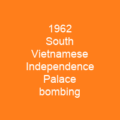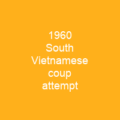Understanding the Siege of Plei Me: A Turning Point in Vietnam
The siege of Plei Me was a pivotal moment during the Vietnam War, marking the first major confrontation between U.S. forces and North Vietnamese troops. It set the stage for what would become one of the most significant battles of the conflict, raising questions about strategy and the nature of warfare in the region.
The Establishment of Plei Me Camp
In October 1963, the United States Army Special Forces established a camp at Plei Me. This outpost was staffed with over 400 Civilian Irregular Defense Group program soldiers and American advisors. The camp’s strategic location made it an ideal target for North Vietnamese forces.
The PAVN Offensive
Major General Chu Huy Mân, tasked with destroying the special forces outposts, launched his attack on October 19, 1965. His goal was to surround Plei Me and overrun the camp. The North Vietnamese Army (PAVN) attacked with small arms, mortars, and recoilless rifles, setting the stage for a fierce battle.
U.S. Response
The U.S. response was swift. Air strikes were called in to support the besieged forces at Plei Me. A relief group of 175 men was airlifted into the area and made its way to the camp, taking command under Colonel Beckwith.
Resupply and Reinforcement
Plei Me was resupplied through airdrops by various aircraft, including CV-2 Caribous of the 92nd Aviation Company, CV-7 Buffalos of the U.S. Army Aviation Test Board, and C-123s from the 310th Air Commando Squadron. These supplies were crucial in sustaining the besieged forces.
II Corps’ Response
The PAVN’s plan was not to overrun Plei Me but to lure out II Corps’ main force from Pleiku, creating an opportunity for a decisive strike. General Vĩnh Lộc of II Corps accepted this challenge and established a relief task force.
Operation Long Reach
The 1,400-man armored Task Force led by Lieutenant Colonel Nguyễn Trọng Luật moved out to Phú Mỹ on October 21. The ARVN forces faced ambushes but continued their advance, eventually reaching Plei Me with minor resistance on October 25.
Aftermath and Operations
In the aftermath of the siege, elements of the 1st Cavalry Division were airlifted to Plei Me. General William Westmoreland visited the area and authorized a counter-offensive against the withdrawing North Vietnamese forces.
The Battle of Ia Drang
Elements of the 1st Brigade located a PAVN hospital area, killing at least 99 soldiers on November 1. The division’s tactical coordination was crucial in managing operations and ensuring effective communication between U.S. military authorities and ARVN unit commanders.
Conclusion
The siege of Plei Me marked the beginning of a series of intense battles that would define the Vietnam War. It highlighted the complexities of modern warfare, the importance of strategic planning, and the resilience of both sides in the face of adversity.

The siege of Plei Me was a turning point, not just in the Vietnam War but in the broader context of modern military strategy. It showed that even with advanced technology and superior numbers, victory is never guaranteed without strategic foresight and tactical flexibility.
You want to know more about Siege of Plei Me?
This page is based on the article Siege of Plei Me published in Wikipedia (retrieved on November 29, 2024) and was automatically summarized using artificial intelligence.







